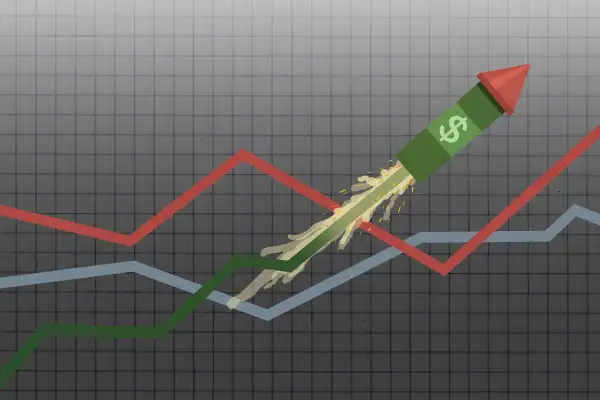If You'd Bought Stocks in March 2020, You Would Have Doubled Your Money by Now
Money is not a client of any investment adviser featured on this page. The information provided on this page is for educational purposes only and is not intended as investment advice. Money does not offer advisory services.

If you had invested in stocks when the market crashed in March 2020, you could have doubled your money by now.
At the market close on Monday, the S&P 500, a benchmark commonly used to measure the broader stock market, was up 100% compared to its pandemic low on March 23, 2020. That's the fastest a bull market has doubled from a bottom since World War II, according to an analysis from CNBC.
To reach this milestone, bull markets take an average of more than 1,000 trading days, CNBC found. This time, the S&P 500 did it in just 354 trading days.
The last year has seen a surge in interest around investing as COVID-19 restrictions kept us at home and zero-commission trading apps like Robinhood made investing accessible to stock market newbies. Stimulus checks, loans to small businesses and near-zero interest rates provided hope for a speedy economic recovery. And tech giants like Apple, Facebook and Netflix benefited from stay-at-home orders, leading much of the market's rally.
If you're kicking yourself for not investing a large chunk of your money when the pandemic hit the U.S. and markets tumbled, you're probably not alone. Investors pulled $326 billion out of mutual funds and exchange-traded funds in March of 2020 — more than triple the fund outflows seen in the previous monthly record, October 2008 — according to Morningstar.
Keeping your cash on the sidelines can cause you a big financial blow. If you missed the market’s top 10 best days over the last 20 years, your overall return was cut in more than half, according to J.P. Morgan Asset Management’s 2021 guide to retirement. The return on a $10,000 investment would have been $42,231 if you were fully invested, but drops to $19,347 if you missed those key 10 days.
More from Money:
This Chart Shows Why Stock Market Investors Shouldn't Sweat Up and Down Days
Investors Who Bought Gold to Beat 2021's Inflation Surge Are Still Waiting to Cash In

